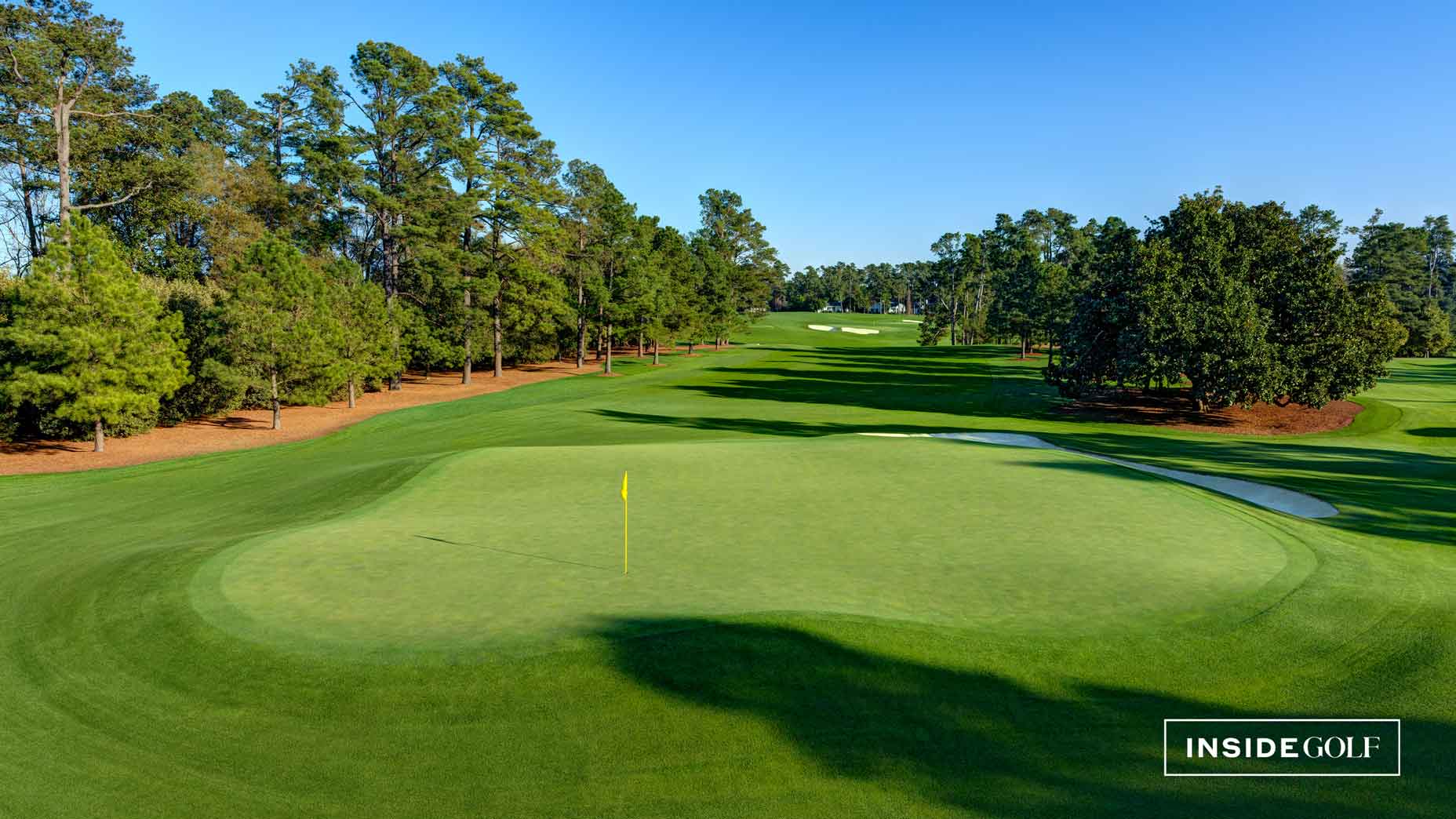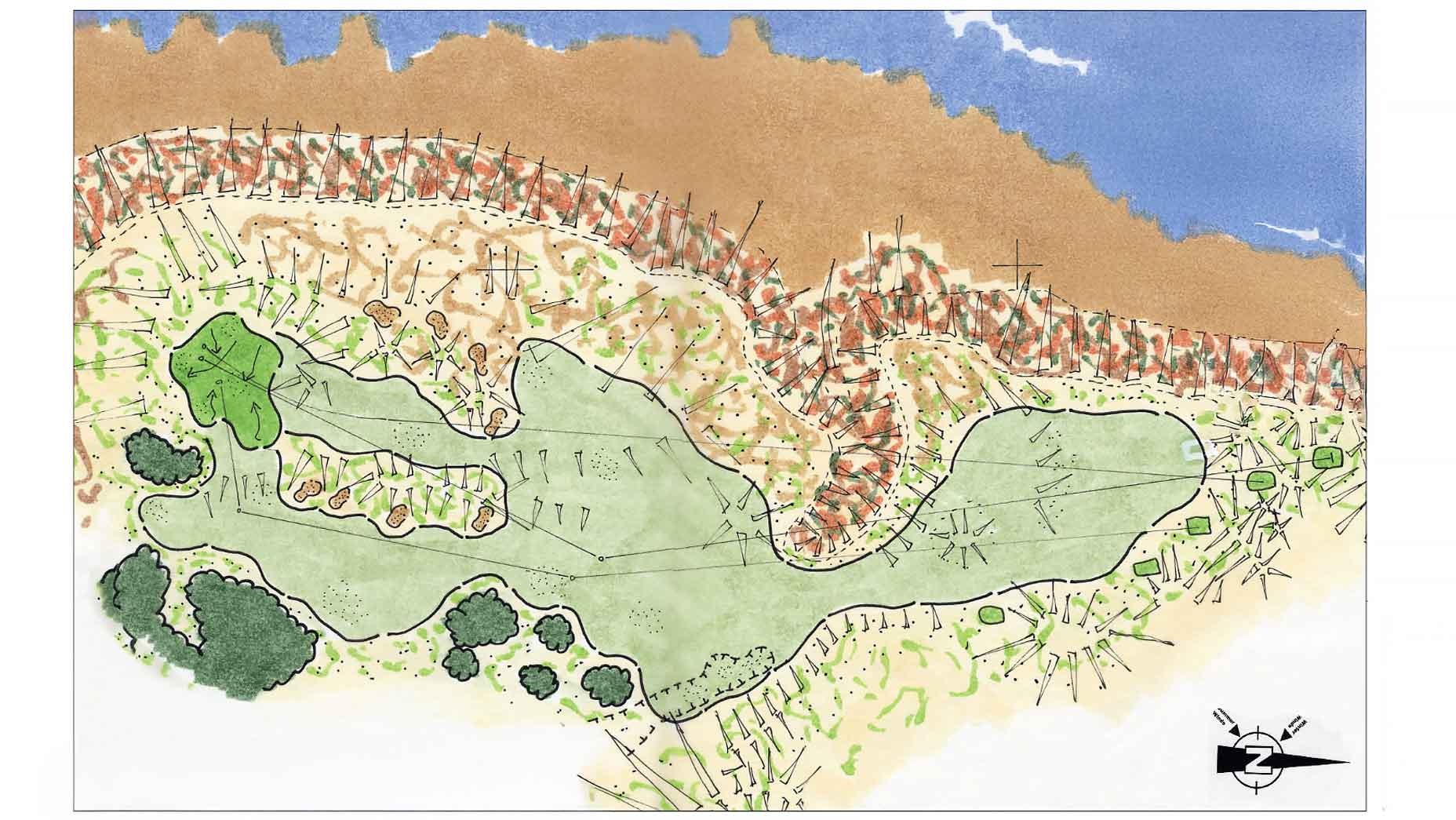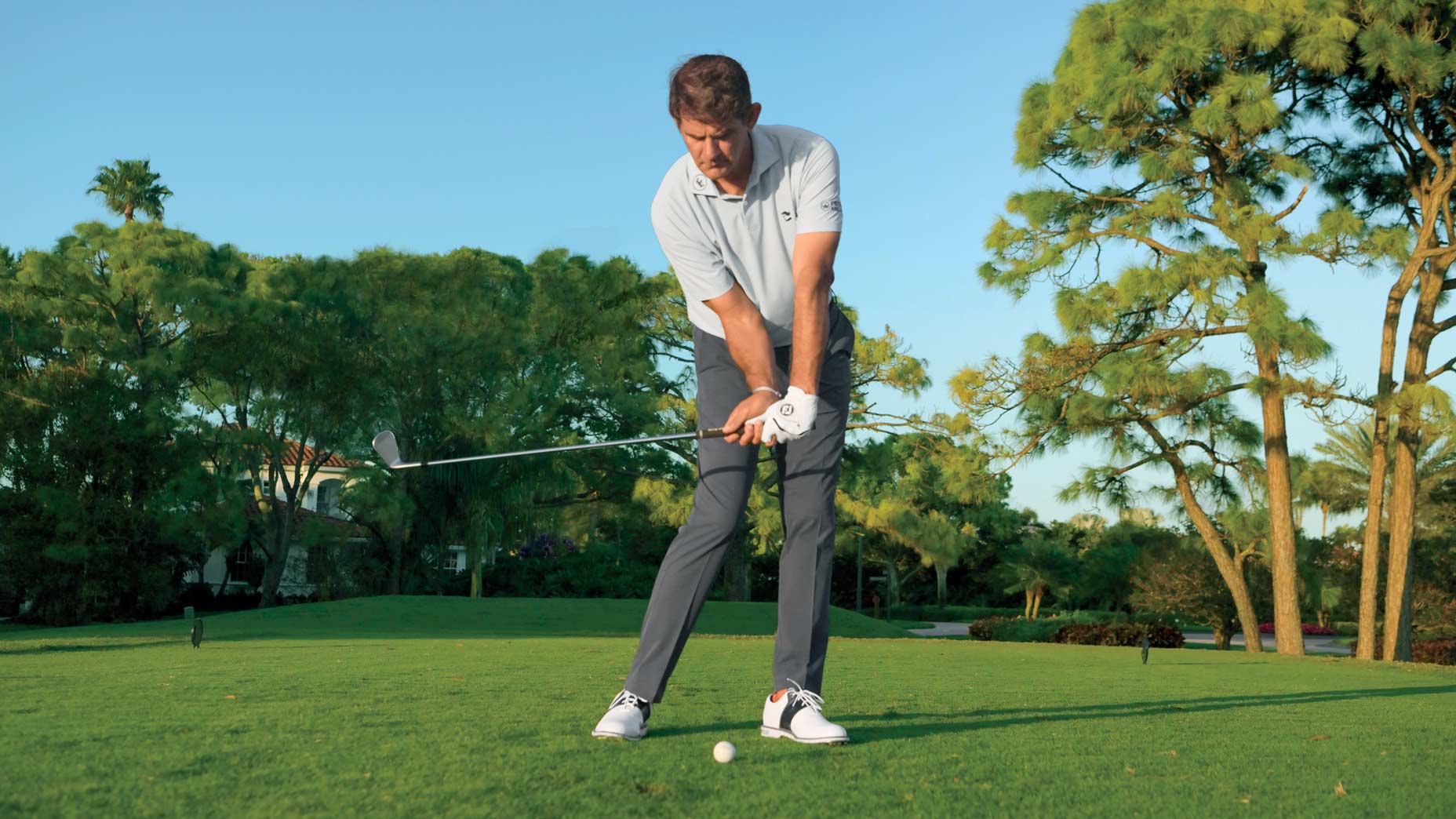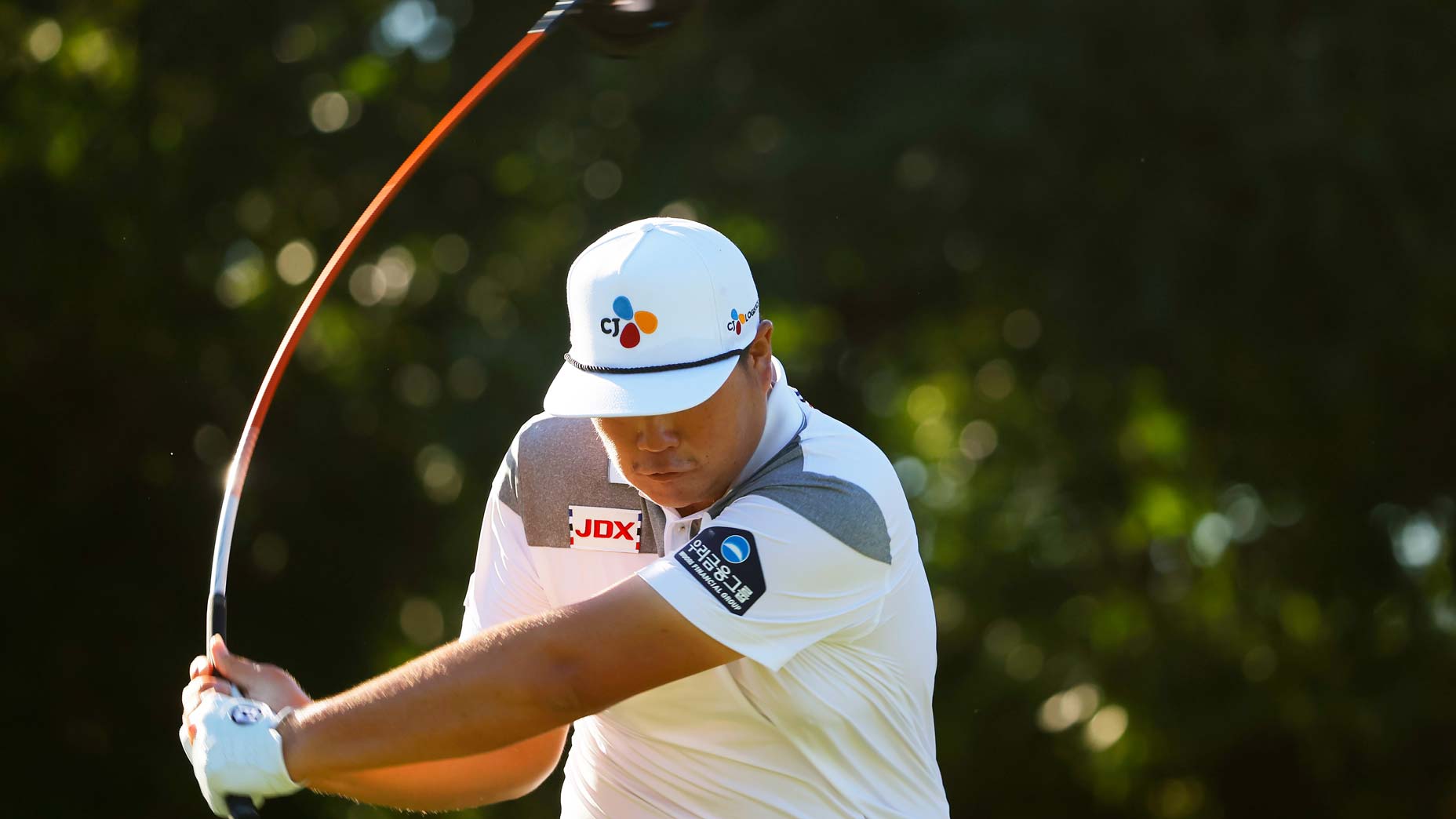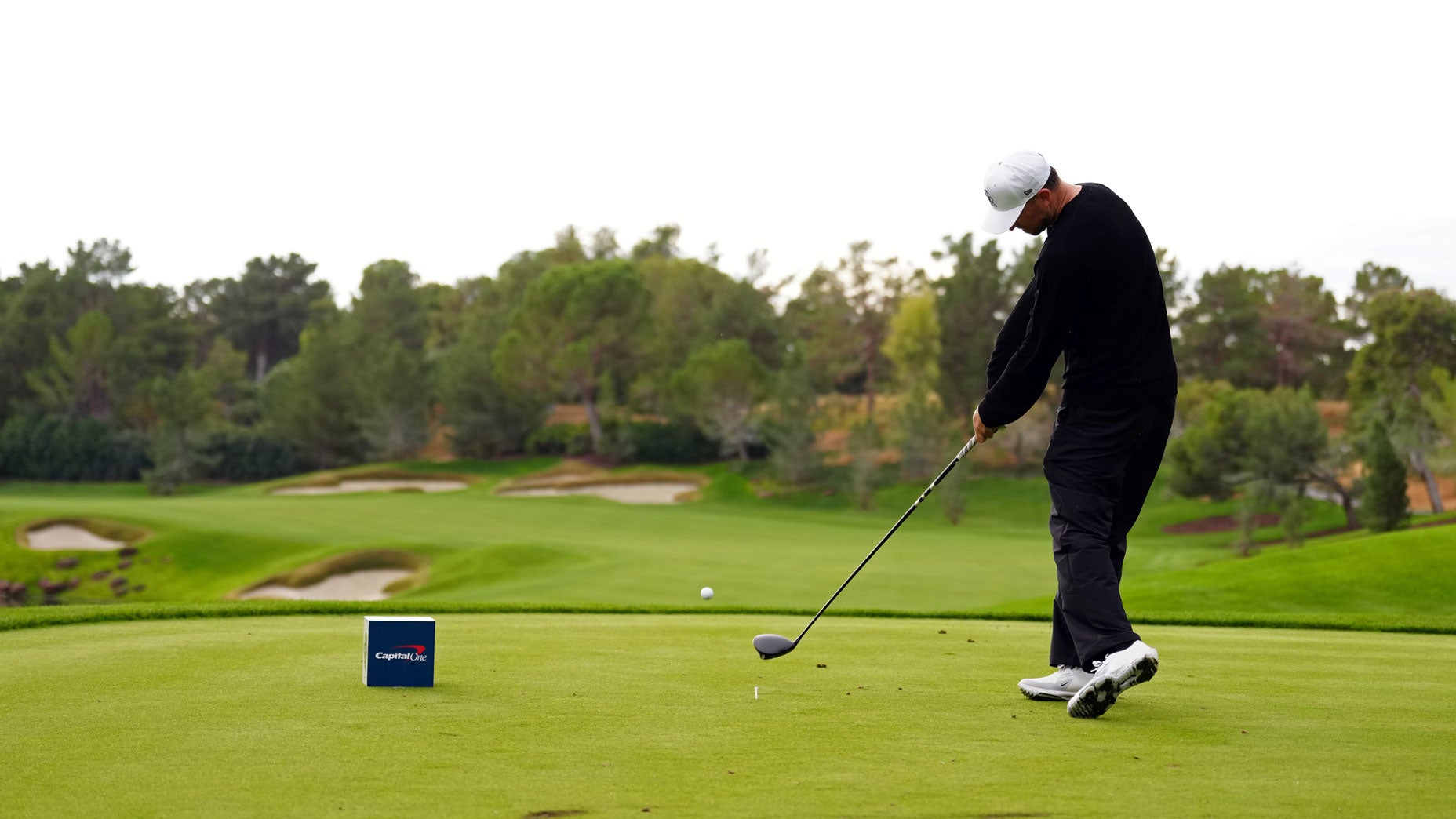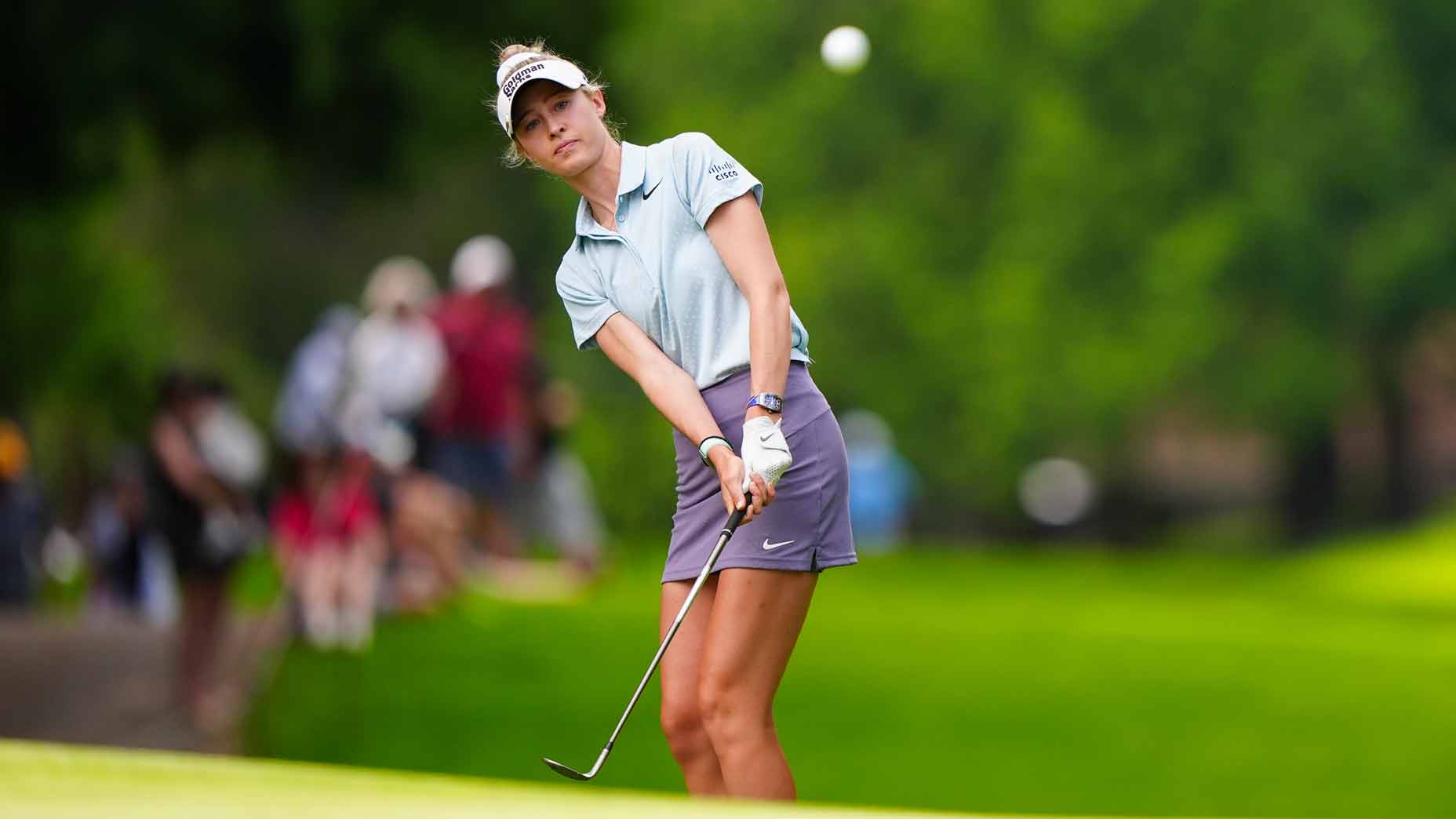There’s a saying that the Masters doesn’t really begin until the leaders hit the back nine on Sunday. A flashback to some of the final-nine barnstormings (Jack Nicklaus in 1986) and collapses (Rory McIlroy’s unfortunate tangle with the trees at No. 10 in 2011) proves that you can argue that that statement holds more water than what runs through Rae’s Creek.
Statistically speaking, the two most difficult holes at Augusta National, consulting stats that go all the way back to 1942, are Nos. 10 (0.298 str0kes above par) and 11 (0.304). Add in the peril that awaits on No. 12 (a 150-yard par 4 that plays just as difficult as the 240-yard par-3 4th, according to the numbers) and it’s not hard to accept that getting off to a good start at Augusta National, especially on Sunday, is often more important than how you finish. But, in a word, it is hard.
Any golf fan knows what the leaders need to do on Nos. 13 and 15 (two of the most beautiful — and birdie-able — par 5s in major championship golf ), but for many decades those watching on TV could only see the back nine. Today, thankfully, you can see it all, and, if you watch closely this year, you’ll realize that the front nine — specifically, the first five holes — are the ones that truly make or break a player’s chances.
Adam Scott, the 2013 champion knows. In a recent interview with GOLF’s Claire Rogers, the Aussie revealed that the most nerve-racking shot in golf, year-in and year-out, is the first at Augusta. And that’s on Thursday.
I’m lucky in that my primary teaching location, Fusion ATL, is, as the name suggests, Augusta-adjacent in Atlanta. Many of my students are Augusta National members. I’ve coached some of the guys you have seen or will see play for a green jacket. And I’ve had the honor of playing there many times. Like many of my GOLF Top 100 Teacher colleagues, I know the place well. And each time I visit or walk with a player/student, I’m reminded of the same thing: The holes most fans know the least about are the ones they need to get to know better. They’re nasty. And they hit you right from the start.
No. 1: Tea Olive (Par-4)

Most golf courses open with somewhat of a “warm handshake.” Tee it up and have fun. Augusta doesn’t. The opener is a killer and has become increasingly difficult over the years with the addition of a few extra yards — and a lot of trees.
The view is nice: When you look to your left, you see the expanse of most of the entire property. Phenomenal. As you turn your gaze back to the fairway … well, not so nice.
The trees begin roughly 150 yards off the tee box, and the hole gently moves to the right. But I wouldn’t call it a dogleg, because the tee shot is pretty much straight. The best golfers in the world now can hit high fades without blinking, as six-time winner Jack Nicklaus did. Maybe you’ve heard that Augusta National favors a draw player. Not anymore. Big, long fades are the shots du jour come April in Georgia. No. 1 is a medium-length par 4 by today’s major standards, but, as you watch in person or from your couch, count how many players use anything but driver off the first tee. You’ll use the fingers only on one hand.
The bunker on the right side of the fairway on No. 1, like many bunkers at Augusta, has very clean edges. But it’s deep, which limits your options when going for the green if and when you find it. Point is, there isn’t much bailout on ANGC’s opener.
Players who get conservative off the tee are left with an extremely long second. No fun. But, say a player hits a great drive. They’re in the fairway staring at a mid-iron to the green. Here’s where you first learn what Augusta’s all about. The greens look big, as the one on No. 1 does, but really they’re only as big as the area directly surrounding the pin. Alister MacKenzie and Bobby Jones — geniuses.
Par is birdie on this hole. Players who card four here are likely to gain a half shot on the entire field over four days. Maybe that doesn’t seem like a lot, but it adds up. And this is just the opener.
No. 2: Pink Dogwood (Par-5)

On to the 2nd, Pink Dogwood. Beautiful sounding name. Beautiful hole. From the tee box you think it’s a dogleg, but it isn’t. You’ve got to hit it pretty straight off the tee — then the dogleg comes into play.
It’s a par 5. It’s early in the round. It’s potentially a birdie hole for sure. But it’s also tricky. There’s a creek that runs along the left-hand side of the hole that most fans don’t know about. But the bunker on the right—that’s the scary thing. As you stand on the tee, it’s the only thing you really see. Smart players, many of whom have green jackets in their closets, have approached the tee shot on No. 2 with the same thought: Be aggressive, but choose a conservative target. Sounds simple, but this kind of game management takes discipline. The best line: just off the left edge of the bunker. If the ball draws a little, great. If it doesn’t—and if you’re long enough—no biggie either. But for years players have thought they needed to carve something special here. You don’t. Watch Bryson or Ludvig: They’ll just pound it here.
No. 3: Flowering Peach (Par-4)

The 3rd hole at Augusta, Flowering Peach, is a fantastic, short-ish par 4. What’ll be interesting to watch this year is that the tree in the right half of the fairway is no longer there (thanks to Hurricane Helene). It was, for years, the only thing players had to worry about.
When I first played Augusta, decades ago, nobody hit driver on No. 3. Not only because of that tree but the bunkers on the left, which loomed just in driver range. In many ways, the inherent danger has probably messed up a few players over the years, derailing their chances of winning at Augusta on what should be a very simple hole. This year, take note of how many players hit pitch shots into the 3rd green. We all know how Augusta has tried to “Tiger-proof ” the course, but here’s an example where length is your friend, not some unique ability to carve a fairway wood or long iron to avoid the bunkers or the tree that may or may not be there come this Masters. Today’s players realize that hitting it as close to the green — instead of laying up to a preferred yardage — is the best route to a green jacket, especially on No. 3.
No. 4: Flowering Crabapple (Par-3)

Players reach the first par 3 at Augusta National on No. 4. The name of the hole is Flowering Crab Apple. Perfect, because it sounds sweet, but crab apples are actually very sour. It plays 240 yards — driver for you and me, but, for the competitors, it’s more like a 4- or 5-iron. Again, here’s where power pays off. If you had to guess which par 3, the 240-yard 4th or the 155- yard 12th, has the lower scoring aver – age, what would you guess? I’ll spare you the Google search: The average score on each hole since 1942 is exactly the same, give or take a decimal point.
No. 5: Magnolia (Par-4)
Now, No. 5. Players are about an hour into their rounds. Nobody used to talk about the 5th until ANGC significantly lengthened it a few years back, adding some 40 yards. For years it was a hole that simply was the one you played after No. 4 and before you teed off on No. 6.
Now, it’s a breath-taker. It’s beautiful, but it’s hard. Like Nos. 10 and 11, the goal here is to simply hold serve, which is what each of the top-five finishers (Scheffler, Åberg, Fleetwood, Homa and Morikawa) did at last year’s Masters. (DeChambeau, who placed sixth, actually birdied the thing.) At one point in tournament history, players statistically carded an average of par on this hole. Since the changes, it’s now, coincidentally, the fifth hardest hole at ANGC, averaging 0.266 strokes over par.
So how to win a green jacket? As ever, dominate the par 5s. Make it through Amen Corner. And now … manage what’s the most unheralded and least-known part of the course: the starting five. They offer no mercy and few roars. They favor length over shot-shaping. My advice? Bet on a bomber.
